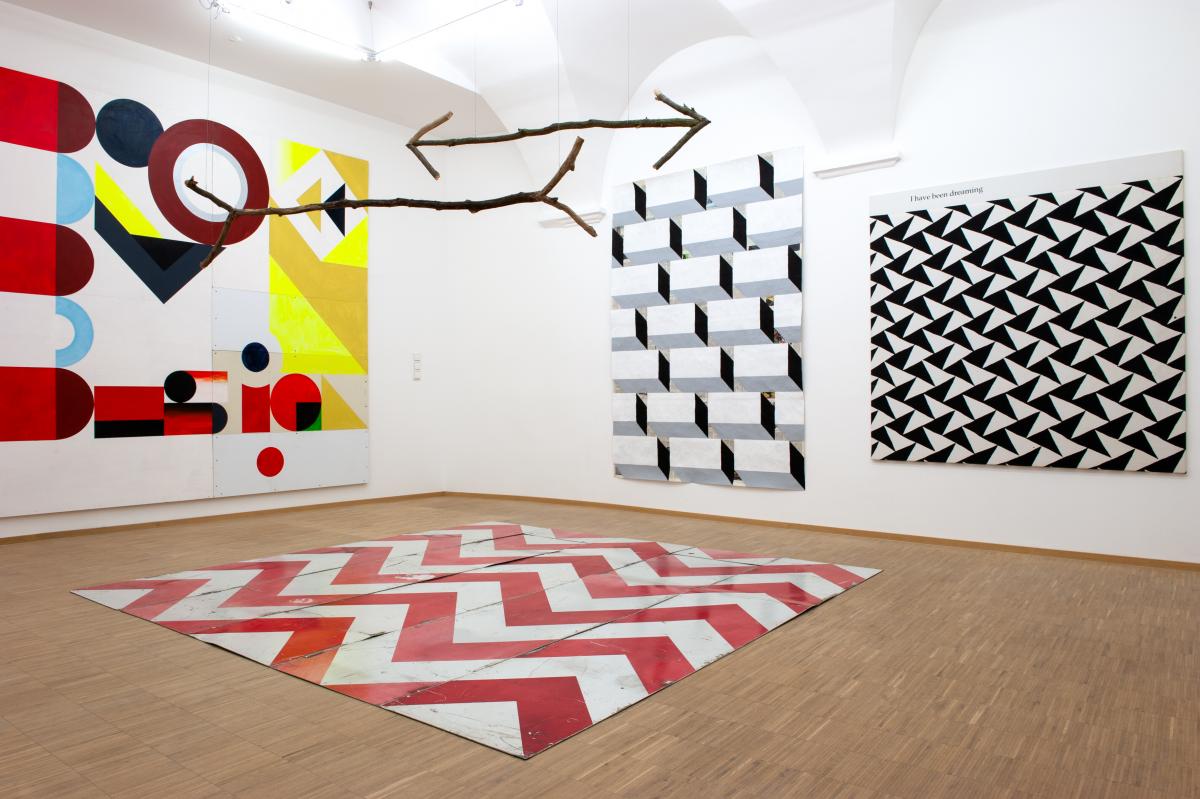
2-4, rue Wiltheim, Luxembourg-Fëschmaart
Cette visite sera précédée par la visite de l'exposition La moitié des yeux de Yann Annichiarico.
No pattern save that we imagine - Artistes : Sebastian Hammwöhner, Virginie Mossé, Wawrzyniec Tokarski, Gabriel Vormstein et Marcus Weber
Exposition du 14.03.2019 au 27.04.2019
‘Existence is random. Has no pattern save what we imagine after staring at it for too long.
No meaning save what we choose to impose.’—Rorschach
Rorschach, one of the characters in the seminal graphic novel Watchmen (1986–87) created by writer Alan Moore, artist David Gibbons and colourist John Higgins,
is a retired superhero turned vigilante who hides behind an ink-blotted facial mask.
Donning a hat and a trench coat, he is a chameleon-like character whose personal outlook on the world is a bleak one – a vision in which there is no place for fate or God.
In Rorschach’s ideology, all opportunities and choices are arbitrary. Any encounter or discovery is therefore no more than an insignificant and essentially inexplicable
coincidence – a ‘roadside picnic’, to quote the title of Arkady and Boris Strugatsky’s science-fiction novel from 1971, to which Sebastian Hammwöhner refers in one of his arrangement of civilisational relics. As with the extraterrestrial visitors in the Strugatskys’ dystopia, who fail to even notice the presence of humans on this planet, Hammwöhner’s work asks what exactly enters into our field of vision and informs our understanding of the world. Science – and most other human activities, for that matter, including art – tends to look at its subjects from close up, often losing sight of the bigger picture. The question, therefore, is how we can retain an overall, detached or impartial view when captivated by details?
Similarly, in Virginie Mossé’s works, such as Begreiflichkeit (Comprehensibility), what we perceive differs according to the angle from which we look at it. Gabriel Vormstein’s images, which are painted straight onto recycled newspaper, confront us with a different concept of space, devoid of perspective and where the background appears as relevant as the motif – the purpose for which it has been used, or rather misused. Incidentally, his works are also a comment on the short-lived nature and ambivalence of media who navigate between objective news coverage and pursuing their own agenda. If Marcus Weber’s paintings are anything to go by, the natural environment and society at large are exposed to similar threats. Here, they both seem to drown in colour, as though after a natural disaster – the deserved consequence of our trivial daily activities.
Might there be a kind of transcendence, some unforgiving moral instance behind this phenomenon? It does not matter because we cannot effectively reflect upon what has not happened yet, as suggested by one of my own paintings. As with traffic jams, when a thing occurs, it is already too late to take a different path. Meanwhile, all we can do is gaze back as though through a rear-view mirror and wonder whether different routes actually coexist, and if so, how they align. The words of a curious prayer come to mind: ‘As it was in the beginning is now, and ever shall be, world without end. Amen.’ - Wawrzyniec Tokarski (Photo : Tania Bettega / Nosbaum Reding, Luxembourg)
Catherine de Jamblinne accueillera les Amis des Musées pour ce Midi de l'Art.
INSCRIPTION : nous vous prions de vous inscrire par le formulaire attaché à l'exposition de Yann Annicchiarico.